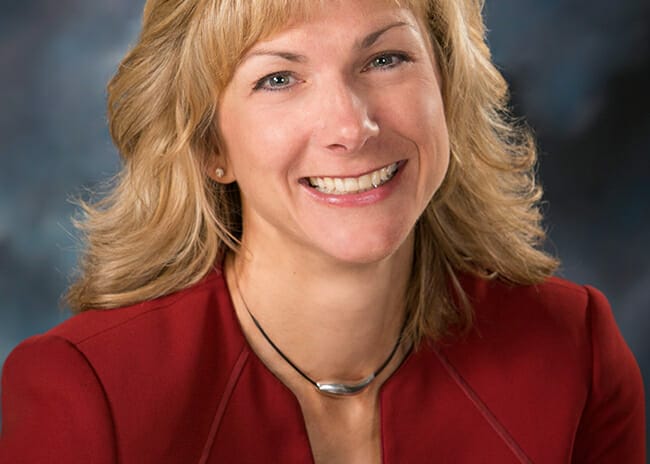The Wisconsin Alumni Research Foundation, a $3 billion endowment funding scientific research programs at the University of Wisconsin-Madison, has helped finance life-changing scientific innovation, from human embryonic stem cell treatments to the processing technologies that underpin modern computing.
An equally bold and experimental ethos underscores investment strategy at the fund.
A risk parity strategy with a portable alpha overlay, applied across the whole portfolio rather than just a portion of assets under management, repeatedly exceeds its benchmark and ranks as one of the US’s best-performing endowment and foundation portfolios over the last 10 years.
Tom Weaver, then-chief investment officer, introduced the strategy back in 2005, to escape the rollercoaster of WARF’s large equity allocation. Two years later, when Weaver left to join one of the hedge funds in the portfolio and Carrie Thome became CIO, the strategy was still bedding down and had its sceptics. Nor was 2007 the ideal time for risk parity and an overlay, because equity-centric portfolios were doing better at that time than diversified ones.
“People were starting to ask, ‘What did we agree to?’ ” Thome recalls.
Beta
Thome makes light work of simplifying the complex portfolio. The key to understanding it, she says, is to separate the risk parity and portable alpha strategies into beta and alpha, respectively. The risk parity portion comprises leveraged market exposures that are largely passive or semi-actively managed, with strategy following the ideas pioneered by Bridgewater Associates and its founder Ray Dalio, so that the different risk profiles of the assets match and balance.
The entire portfolio is split three ways. The first third lies in domestic equity, developed market equity, and a smaller allocation to emerging and frontier markets. Thome also has in this segment an allocation to domestic private equity that targets the best venture capital from around the country; independent of that, she also seeks out top-tier firms that might take an interest in innovative start-ups spun out of, or still on, campus.
The second third lies in inflation-linked bonds and nominal bonds, and the final third is invested in core real estate, commodities, and recently added style premia, including trend-following strategies.
To ensure that the fixed income allocation has the same risk as more volatile asset classes, such as equities and commodities, Thome uses leverage, in the form of derivatives, to amplify WARF’s bond exposure.
Getting the balance right and weighting the portfolio accordingly requires a certain amount of reworking.
“We’ve gone back and forth,” she says. “Real estate is an example where we mulled whether to allocate it to growth or inflation, or something else altogether. There is a fair amount of modelling, but it’s also common sense.”
Alpha
Rather than tie up capital in the risk parity strategy, Thome uses derivatives – typically futures and swaps – to mimic the market. This frees up money for the pursuit of alpha; in this case, an allocation to 16 different hedge fund strategies uncorrelated to the beta portfolio, targeting consistent returns regardless of what is happening in the market.
By not using capital for the passive portfolio, she frees up $1.5 billion to invest in alpha strategies, much more than what the $3 billion value of the portfolio would typically allow.
Moreover, she estimates she has a similar $1.5 billion additional exposure through leverage.
“I end up with a portfolio that has a notional exposure, including the hedge funds and leverage, of about $6 billion, against our $3 billion of capital,” she explains. “The value of the overlay depends on not having to use capital on the market exposure piece.”
The hedge fund portfolio, run by Ryan Abrams, includes industry ‘granddaddies’ like Bridgewater’s Pure Alpha but it is also small and manageable enough to take a chance on boutique or new managers.
Abrams has focused on finding strategies that deliver upside returns, despite the portfolio being designed to protect on the downside.
Measured against cash, it’s also a challenge to ensure the portfolio doesn’t have any market or beta exposures. It targets an information ratio of 1 and looks for a contribution at the total portfolio level of about 200 basis points. This means the portfolio runs at 4 per cent to 5 per cent volatility, although Thome says individual managers, such as one for a currency strategy, might be more volatile than that average.
Innovation
Change and innovation are constant themes at WARF. Take, for example, the way Thome is comfortable switching assets between the alpha and beta.
The recent addition of style premia to the beta exposure is a case in point. Rather than bring this in as a new allocation, she simply assigned it from the hedge fund portfolio.
“We don’t tend to change assets in the portfolio, we just change the configuration,” she explains. “We took the hedge fund wrapper off it and moved it to risk parity.”
She also applies leverage to the hedge fund portfolio.
“We think of it as partially funding the account,” she explains. “While the manager might run a $100 million notional exposure for us, we fund it with only $50 million of capital. It’s about being able to take existing portfolio managers that you really trust and getting creative in your structure. It is all about implementation.”
It’s this comfort with risk, and engrained desire to innovate, that is driving current discussions at the fund. When WARF switched to a risk parity strategy back in 2005, it targeted a level of volatility of 12 per cent to 14 per cent. Yet the benefits of diversification, and current low levels of volatility anyway, mean that level has always been much lower, at about 10 per cent.
“Should we increase our risk, which we could comfortably do, and aim for a higher return?” she asks, rhetorically. A decision on that could be made when WARF reviews its asset allocation this May. The fund targets long-term returns of 7.25 per cent.
Fearless
WARF is also mulling other ideas, such as taking on an investment management role for other institutions. The conversation follows the endowment’s management of the Morgridge Institute of Research, a scientific body that also partners with the university.
The idea is still a long way from being actively pursued, but whether the endowment is entertaining such possibilities or displaying a comfort with derivatives and leverage that would daunt many, WARF’s board and investment committee give the crucial support Thome’s fearless approach requires.
Investments must support WARF’s operations, but one of the benefits of being an endowment is that Thome doesn’t have to report to a donor or beneficiary base; another advantage is the university alumni, who provide for a rich seam of corporate chief executives and investment experts to call upon. For example, board trustee and University of Wisconsin alumnus Jeff Sprecher, founder, chair and chief executive of Intercontinental Exchange.
“To be able to have [Sprecher, who is also] the chair of the New York Stock Exchange, at a meeting, walking us through implementation, is just fantastic,” Thome says.
She is also able to draw on WARF’s close relationship with the $117 billion State of Wisconsin Investment Board, where she and associate director of investments, Alain Hung, used to work. SWIB and WARF recently set up a venture fund, now open to other limited partners.
“SWIB was trying to find ways to invest in Wisconsin and contribute an economic return that didn’t hit financial returns,” Thome recalls. “We don’t have a big pocketbook, but we are knowledgeable about what’s going on around campus.”
WARF runs its nominal exposure, setting the model, weights and targets across the portfolio itself, but its asset manager, Minnesota-based Parametric, executes all the futures and swaps. The hedge fund portfolio is expensive, but Thome says she can cut costs via “creative structuring”, as seen in the introduction of leverage with smaller managers.
“We probably run a more expensive portfolio than others, but we are very careful not to pay for beta,” she says, adding that the relatively small allocation to private equity and the core real estate exposure also help save on cost.
When Thome took over, she was one of two in the investment team. That has now grown to eight but she says she won’t build a “big bench”.
More than anything, she wants to create a structure that is not dependent on people and can stand on its own. It’s another challenge, given so much of the current strategy, and its success, have been shaped and driven by her.



